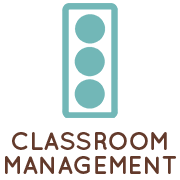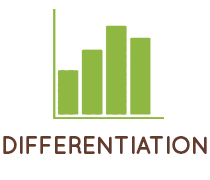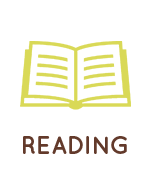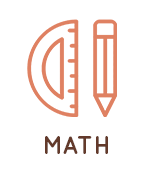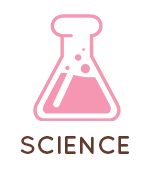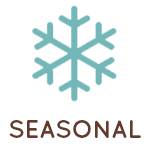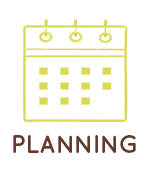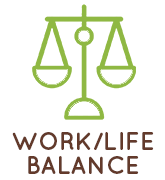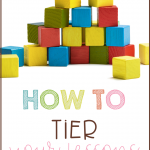
We all have heard of differentiation. I’m sure at some point we have all wondered just how exactly are we suppose to make sure that we are tiering our content so that we can meet the needs of all of our students, both high and low. In this post, I’m going to help you understand how to tier your lessons successfully so that you can help reach all of your students without writing out individual lesson plans for each student.
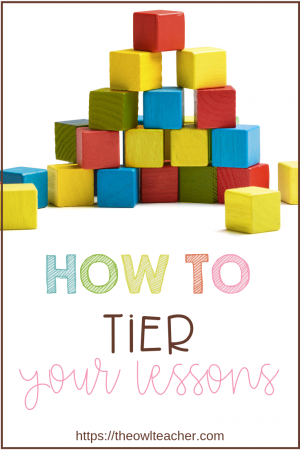
Honestly, we have all heard that there is no “one-size fits all” lesson plan, but when it comes to planning out lessons for each student where they are– at their individual level –it can become daunting and very time-consuming. Here is how I do it.
Sorting Students to Differentiate
First I sort my students into three different groups. I typically call these groups my low, medium, and high, but you can call them whatever. No one sees this list but me and it changes depending on what concept we are learning. I sort students based on their data from a major test, such as the ITBS. If I don’t have any information from a test such as that, I make sure I provide students with a pretest before I start a unit to get an idea of their level of understanding.
Students who are grouped into the “low” group are students who don’t quite have the concept mastered or are below-grade level. Students who are in the “medium” group are students who are exactly where they should be: on-grade level. Finally, students who are in the “high” group are students who have already grasped the concept and are ready for a challenge, or above-grade level.
While I understand that this doesn’t “individualize” each student, it does help get us closer to their needs.
Tiering Your Lessons
Next, I start with my students who are on-grade level (medium) and plan my lesson for them. This is likely what you normally plan each week anyway. I write all of this in my lesson plan book and prepare everything I need as I normally would. Then, I look at what I have planned and the standards I’m addressing.
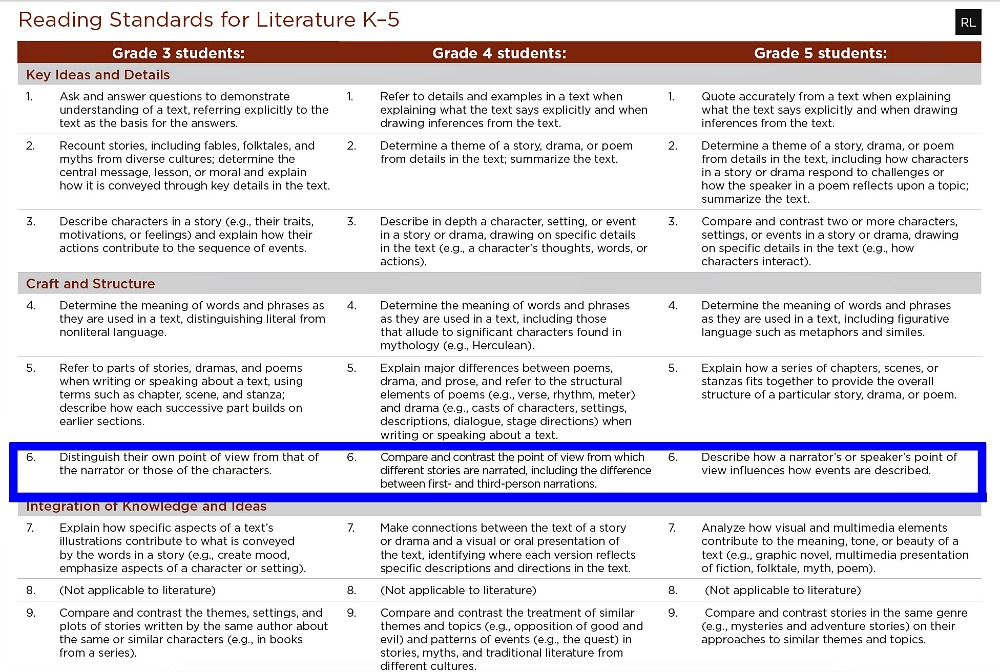
So let’s say that I’m addressing the fourth-grade reading literature standard RL.6 –
“Compare and contrast the point of view from which different stories are narrated, including the difference between first-and third-person narrations.”
For me to tier my lesson plans for my below-level students (low), I can do this one of two ways:
1.) Examine my data (pretests or other tests) to determine what specifically I need to address with these students.
or
2.) Look at the standards for the previous year as my starting point.
In this case, I would likely consult both. I would make sure my students understood what point of view was and then have them practice a bit more by distinguishing their point of view from a character’s in a story. I wouldn’t necessarily have to print new material for these students. I could pull small groups with these students and together we could work on it using trade books or picture books. This would also help me see any particular misconceptions or address anything specifically from my data.
How you choose to tier your lessons would depend on your students and their needs. This may even vary from year to year.
For my above-grade level students (high), I have two options:
1.) Look at the standards for the year after as my starting point (acceleration).
or
2.) Enrich the standards for on grade level with more critical thinking (think top-level blooms with independent projects) (enrichment).
Using the same standard above with this example, I could look ahead at the fifth-grade standards and have them examine how the narrator’s point of view actually influenced how the events in the story are described. Or if I’m thinking independent projects, I could have them all work together in a literature circle and read two different books that are similar in subject but with different points of view. Then I could have them create a presentation of some sort.
I have also used the above-level students to “peer-tutor” on-level students or below-level students for some activities.
Planning Tiered Activities
Another option when planning tiered lessons is asking yourself “how can I scaffold this content for my students who are not on grade-level?” That will help you take the activity and break it down a bit more for those students. When trying to reach your above-level students, you can always ask yourself, “what more can I do to help them understand this topic a bit more or even deeper?”
Ultimately, when planning, remember that you need to reach all students in your classroom regardless of what level they are at. This can be done without spending extra time making multiple copies of different worksheets for each learner. When you tier your lessons in a way that can both scaffold instruction and enrich, students will be able to learn and you’ll save time.


